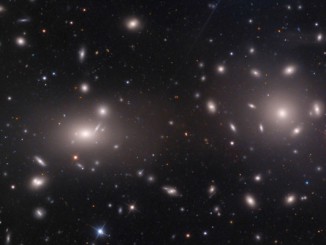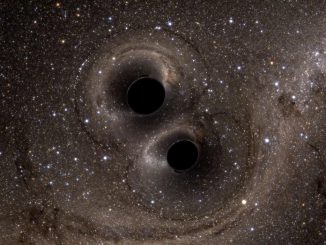
Dark matter, whatever it might be, makes up nearly 30 percent of the universe, providing the gravity that explains the unexpected behaviour of single galaxies and enormous clusters. Understanding how the mysterious material is distributed across the cosmos is a major topic of research.
Two astronomers from Spain and Australia have found a way to measure that distribution in galaxy clusters by studying the faint glow emitted by stars that have been stripped away from their host galaxies and float freely in intragalactic space. Over time, the stars end up where most of the mass of a cluster – mostly dark matter – resides.
“We have found a way to ‘see’ dark matter,” said Mireia Montes of the University of New South Wales, Australia, and lead author of a study in the Monthly Notices of the Royal Astronomical Society. “We have found that very faint light in galaxy clusters, the intracluster light, maps how dark matter is distributed.”
The faint light from the intracluster stars traces the distribution of dark matter in a given cluster more accurately than other methods, including gravitational lensing, which requires precise lensing reconstruction and time-consuming spectroscopic observations. Studying intracluster light only requires deep imaging, allowing astronomers to study more clusters in less time.
Montes and Ignacio Trujillo of the Instituto de Astrofísica de Canarias, Spain, based their conclusions on observations made by the Hubble Space Telescope as part of the Frontier Fields program, which surveyed six galaxy clusters in a program to image more distant objects using gravitational lensing.
Montes and Trujillo plan to study more of the original six clusters to verify the accuracy of their technique. Assuming other researchers confirm the approach, “there are exciting possibilities that we should be able to probe in the upcoming years by studying hundreds of galaxy clusters,” Trujillo said.



